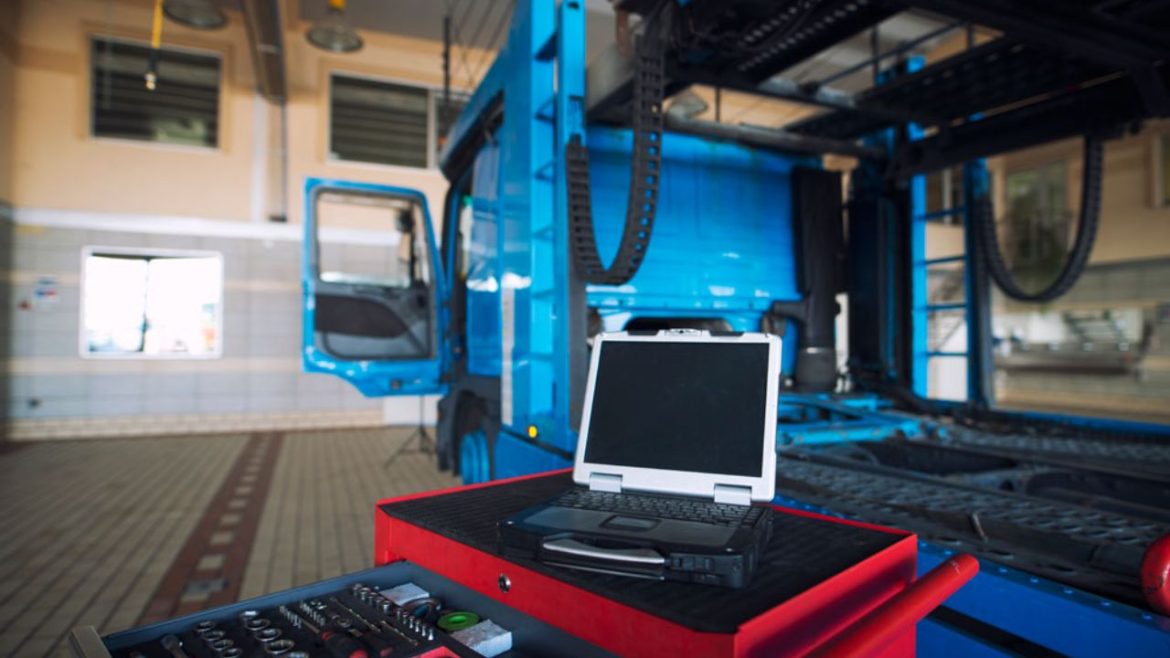Automation, real-time data processing, and system integration have become important in contemporary transportation networks because they ensure safety, efficiency, and service delivery. When running a high-speed rail network, tracking aircraft logistics, or managing the intelligent infrastructure of public transport, the core of the operations is formed by the computing system that has to be able to work in a challenging environment. Reinforced Computer is designed to meet extreme conditions and has become a vital element in the transportation, rail, and aviation industries. These computers offer the reliability, accessibility, and speed to keep the operations in action, regardless of how difficult the circumstances may be.
Rugged Solutions in the Transportation Industry
With the transportation industry becoming more integrated, digital systems are being used across fleets, terminals, and control centers. Whether it is a real-time GPS tracking system and passenger information system, predictive maintenance, or cargo monitoring, the requirement for quality computing hardware is increasing at a very fast pace. Consumer-grade desktops or consumer computers are not capable of withstanding the vibrations, shocks, temperature extremes, and dust and moisture encountered in transport applications. Such situations are exactly what rugged PCs have been built to operate in, operating day in and day out in mobile or demanding environments.
The Moving Performance and Resilience
Rugged PCs in transportation can work in dynamic and mobile environments, and this is one of the most descriptive features of this device. Take a rail system, where on-board computers need to be continuously vibrating, with sudden braking, power fluctuation, and they have to handle data, ticketing, and communications with passengers. Likewise, aviation systems frequently demand rugged computing at ground control, at the loading point of the cargo, or in the auxiliary service vehicles on the tarmac. In such situations, rugged PCs are required to be able to perform in the most adverse thermal, electromagnetic fields, and variable environments.
In-depth Connectivity and Data Control
Transportation rugged PCs should have the capability of various connections and interfaces. These would have legacy ports (such as serial (RS-232/485) to communicate with older on-board equipment) and newer interfaces (such as Ethernet, CAN bus, USB, and wireless modules such as 4G/5G and Wi-Fi). Rugged PCs are commonly used in the communication center of public transport vehicles and connect them to cameras, digital signage, ticket machines, and remote control centers.
Rugged computers have been used in the aviation industry to facilitate tracking of assets, management of cargo, and ground support activities. They are able to deal with high-speed data transfer and incorporate various input devices, which play a significant role in the logistics of an airport. The systems contribute to making sure the turnaround time of the aircraft is reduced, the cargo is routed correctly, and the maintenance schedules are followed in real-time.
Extreme Environments Resilience
A major characteristic of rugged PCs in transportation and aviation is environmental resilience. Such systems are intended to work at large temperature ranges, typically -20 o C to 60 o C or higher, and have internal temperature regulation systems to avoid overheating or freezing. Enclosures can be compliant with high Ingress Protection (IP) ratings, and are therefore dust, rain, and water splash resistant, a critical feature that can enable outdoor use or deployment in vehicle-mounted applications.
Electromagnetic interference produced by power systems and signal controls also exposes rugged PCs to electromagnetic interference in rail programs. To mitigate this, they have shielding and grounding systems that meet these rail industry electromagnetic compatibility requirements to provide uninterrupted performance in complicated signaling installations.
Sector Use Applications
Rugged PCs are used in rail systems both in rolling stock and in station applications. On board computers are used to manage on board diagnostics, GPS-based location systems, and passenger information systems, whereas on board units deal with signaling, schedule management, and communication with the central control system. Rugged PCs are common in the aviation industry during asset tracking, gate operations, ground logistics, and even in maintenance vehicles.
Rugged systems are also present in road transport, in buses, logistics trucks, and emergency response vehicles to enable applications such as fleet management, route optimization, and real-time surveillance. In all these applications, the rugged PCs offer reliability and the processing power required to support mission-critical functions on the road.
Conclusion
Transportation in the future is smart, networked, and autonomous. To facilitate this change, rugged PCs offer the strong computing foundation required to guarantee safety, accuracy, and efficiency. On the rail, in the air, or through the city streets, these reliable systems are the main ingredients in ensuring the smooth functioning of modern transport networks. Built to be resilient, versatile, and high-performing, rugged PCs keep shaking things up in the constantly changing realm of mobility and transport systems.

